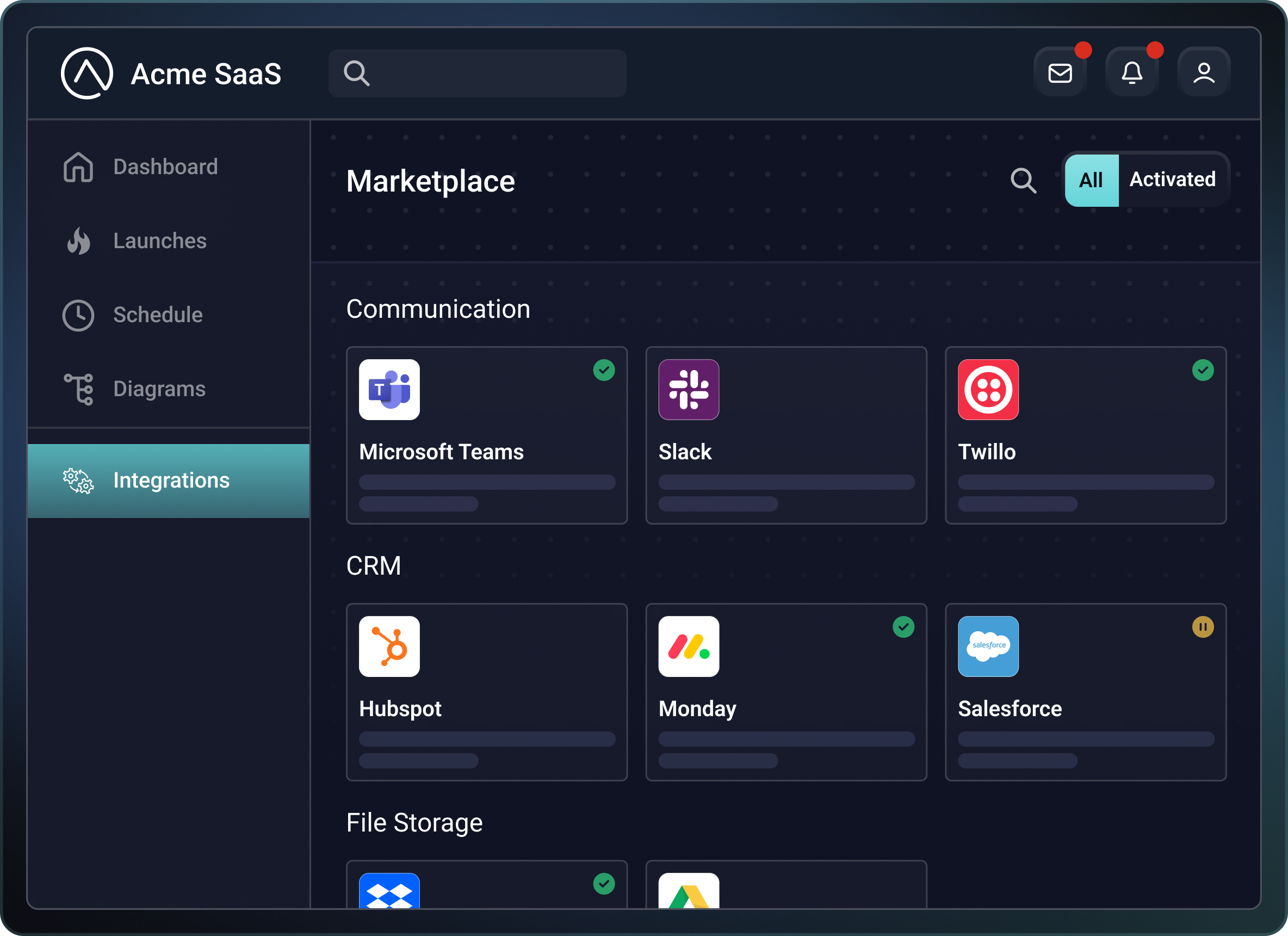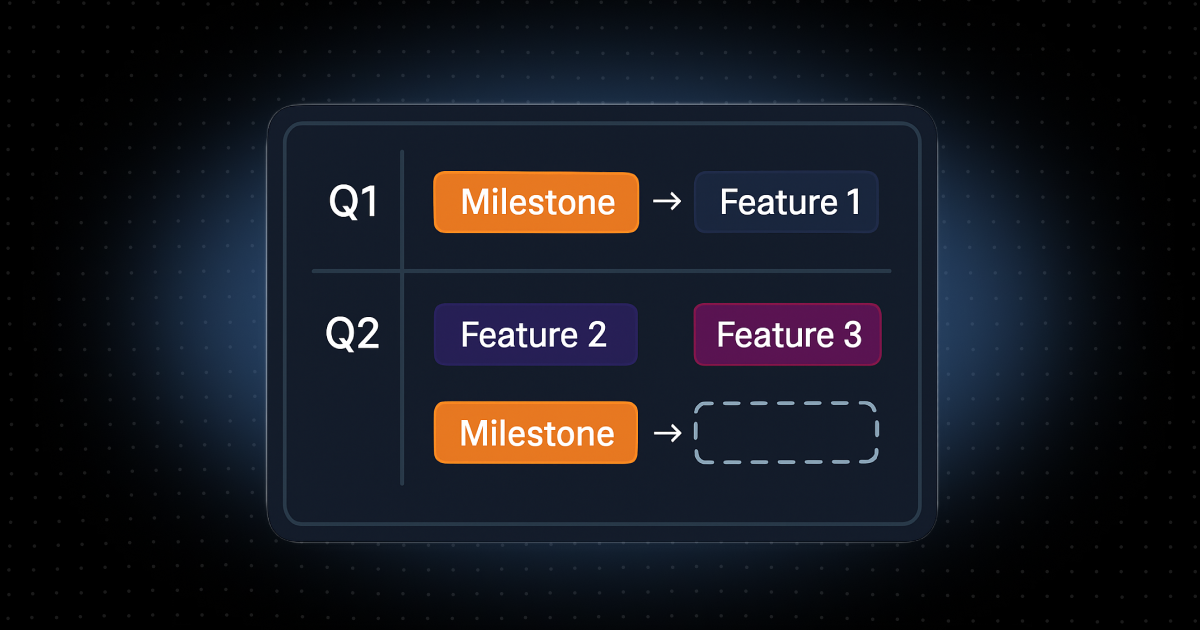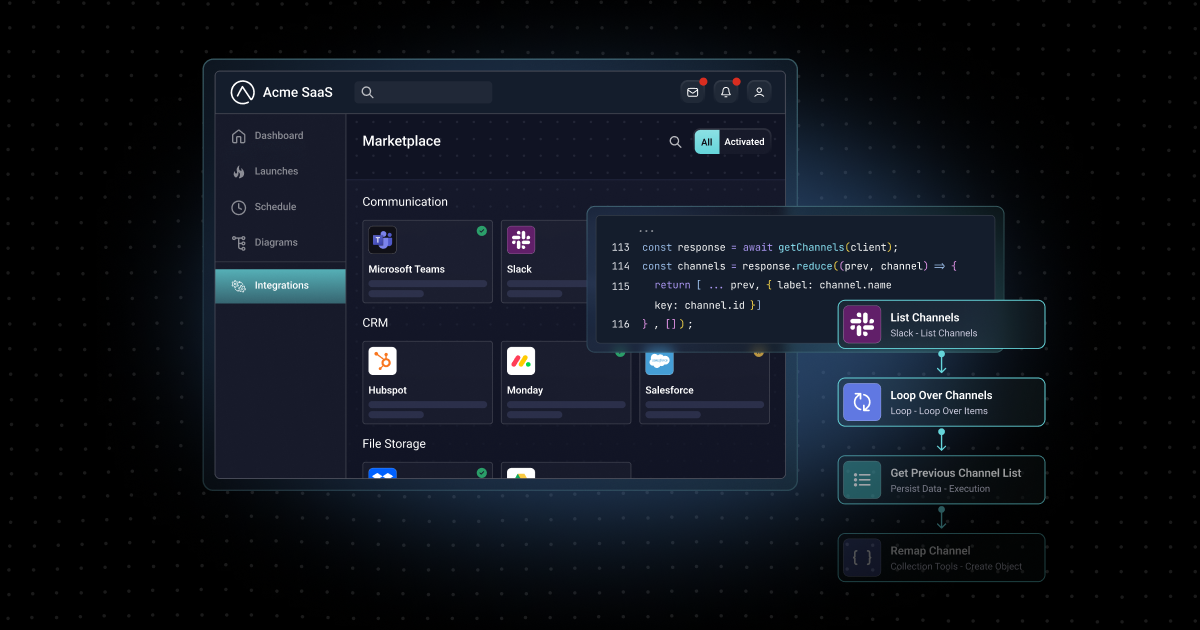If you manage a SaaS product today and your product roadmap doesn't include integrations, your product may not have a future.
Why? The average company relies on more than 100 apps for day-to-day operations. Without integrations, users waste substantial time copying data between those apps, time better spent elsewhere.
That's why integrations are table stakes. Your prospects expect that your SaaS app has integrations with the other apps they commonly use. And if you don't have them right now, you're expected to have them soon.
As a product manager, you need to embrace integrations. Yes, they require real work to build, deploy, and manage. But as you incorporate them into your roadmap and product, you will turn a negative into a positive and move your product into the heart of your customers' ecosystems.
And that's worth doing.
Integration challenges and considerations
From a product perspective, we understand that integrations can appear impossible to wrangle. They are often neglected due to a lack of clear ownership, unpredictable customer-driven timing, resource diversion from higher-priority tasks, and rigid roadmaps that struggle to accommodate them.
As a result of this neglect, when integrations are built, they often look and act like product afterthoughts instead of being key product functionality. And that's not good, either.
You could say, "It's just too much work!" and decide to move ahead without any formal plan for integrations. After all, you've made it this far. And you may be fine for a while.
My development team wanted to be creative, build new things, and help more customers. Having to spend 50% of their time simply maintaining what was already built was draining them.
But, if you do not factor integrations into your roadmap and product, you will lose deals, fall behind your competition, experience higher churn, and perpetuate inefficient product workflows, ultimately creating poor customer UX and reducing customer satisfaction.
How do you get them in the roadmap?
Superficially, it's simple to get integrations into the roadmap. However, there's a bit more involved. Here are a few things you'll need to do as you successfully incorporate integrations with your product roadmap.
Keep your focus on solving customer needs
An integration is just like any other product functionality. If specific functionality in module X of your product is the best way to solve a customer need, then that's what you should do. And if integration Y is the best way for your product to solve a different customer need, that's what you should provide.
It's easy to be narrowly focused on how your customers interact with your product. But knowing their needs requires you to go deeper and understand the other apps that comprise their tech stacks. When you do, you'll have a much more detailed picture of how things work and how your product and integrations can provide your customer with even more value.
Determine how your team and your customers will work with the integrations
How you will build, deploy, and manage your integrations heavily depends on your team's and your customers' composition and technical know-how. Will you have your non-devs create the integration with a low-code designer, or will your devs write the integrations in code? Will your team handle everything from configuration to monitoring, or will your customers need to activate, troubleshoot, and even build integrations themselves?
Knowing everyone's capabilities and corresponding expectations helps you allocate resources efficiently and define realistic timelines. It also helps you determine the most efficient combination of people and tools to achieve the integrations your customers need.
Prioritize your integrations based on value
The tendency may be to start building the integration that everyone's talking about. But that may not be the integration your customers need right now. Instead, ask yourself a few questions: Which integrations are most desired by customers and prospects? Which integrations will extend your product's functionality and market? Which integrations will increase your competitive advantage?
But, beyond determining which integrations need to be first in the development queue, you should also consider which integrations will need custom connectors and even which ones you should enable your customers to write themselves. Check out our post on integration priorities for more details.
Productize your integrations
By productize, we mean that you should go through the same lifecycle (planning, requirements, etc.) for integrations that you do for any other product functionality. Here's a specification template you can use as a starting point to help standardize your integration lifecycle.
Make sure that you build an integration to cover the requirements your customers have in common, but then set up the customer-specific items as configurable. This allows you to build once and deploy the same integration many times to many different customers.
Once you've done that and have an integration that looks and functions like part of your product, ensure your customers have access to integrations via a marketplace and visibility into those integrations with alerts, logging, and monitoring.

Best-in-class SaaS products come with integrations
Treat integrations as first-class pieces of your product. Work them into product planning as early in the cycle as possible, and you'll find that your product roadmap will be better for it.
By keeping your customer needs in focus, understanding how your team and customers best work with integrations, prioritizing integrations based on value, and productizing those integrations, you will be able to scale your integrations to drive exceptional product growth.
Request a demo, and let us show you how to turn your integration challenges into products you can be proud of.




